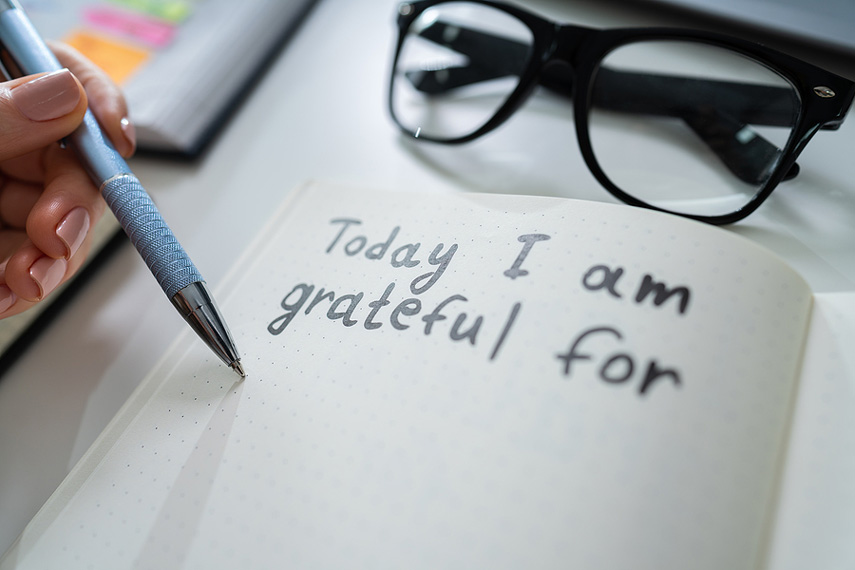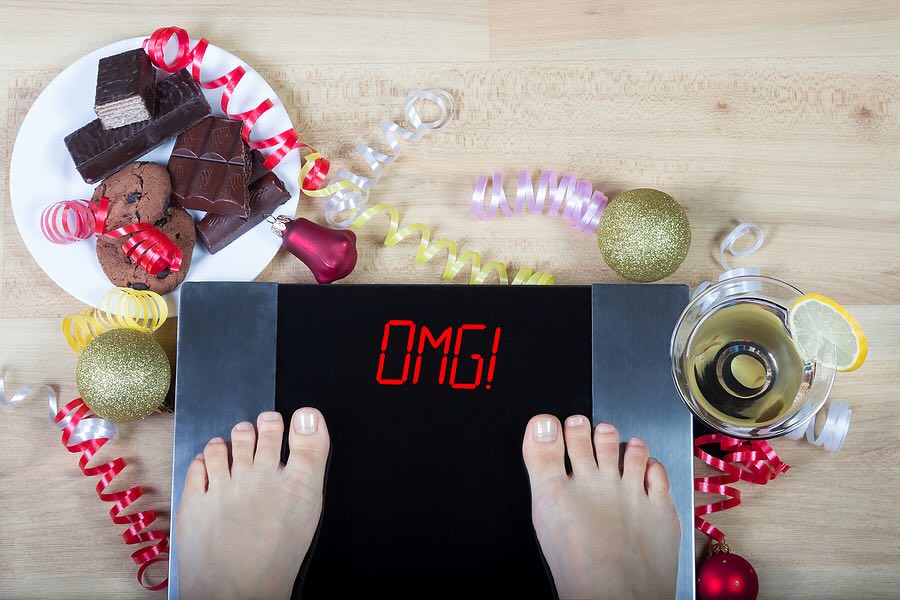This time of year, it’s not unusual for me to hear women talking about stress. The shopping, holiday concerts for the kids, dance shows and parties; external stressors certainly take a toll on the body and mind. But what about the stress from within? When women talk to me about the stress in their lives, they often miss the internal stress. Many times, they don’t even know what I’m talking about. But internal stress that comes from the stories we tell ourselves, our fears and beliefs, can be as damaging – if not more so – than external stressors.
The thing is, external stress is temporary. Deadlines get met, activities take place, and no matter how busy it is, there’s an end in sight. But with internal stress, your body is bombarded constantly – and you might not even know it’s happening.
Why Do We Need to Talk About Stress?
Functional medicine practitioners have long understood the problems chronic stress can create. In 1983, mainstream media finally began talking about stress. I was thrilled to see a story in Time magazine calling stress the “epidemic of the 80s” in a cover story. Back then, the conventional medical profession rarely acknowledged the impact of stress.
Even now, nearly 40 years later, not much has changed in some ways. Life is still filled with stress inducing situations. Stress continues to contribute to myriad health challenges. And I see the effects of stress in my patients almost every day. With the impact of technology, and the way life has changed, many of my patients tell me that life in the 80s was calm compared to the busy pace they race to keep up with today.
But there’s good news: talking about stress has led to more and more practitioners recognizing the connection between stress and adrenal health. Though much debate remains about what to call it, a condition commonly known as adrenal fatigue is getting a lot more attention. While many doctors still don’t understand it, and some even deny it’s real, there are many more voices joining the movement. I’ve been talking about adrenal dysfunction for decades, and treating it with great success!
A Brief Look at Stress and Adrenal Fatigue
When we are in a dangerous or stressful situation, our adrenal glands release hormones, including cortisol and adrenaline to help our bodies respond appropriately. The resulting “fight or flight” response is how our ancestors stayed alive! When this response occurs, energy is released, our senses go on high alert, and digestion slows down.
The stress response is supposed to be temporary. When the threat is gone, adrenaline leaves the system and cortisol slowly returns to normal levels. But when stress is constant – and we all know it is these days – our adrenal glands use all of their resources to produce cortisol. And that creates a whole host of problems!
If your body is dealing with stress for too long the adrenal glands simply can’t function the way they are supposed to, resulting in serious health concerns. But there are warning signs along the way. And it’s my job to help you recognize them!
When your adrenal glands are dysfunctional, but not completely depleted, hormonal imbalances leave you with symptoms like weight gain, depression, insomnia, fuzzy thinking, intense mood swings, and cravings you can’t control. All too often, these symptoms are either not taken seriously or treated with a prescription without finding out what’s causing them.
The good news is that with a little knowledge of what causes both external and internal stress, and some shifts in nutrition and lifestyle, your adrenals will heal. The first step is identifying where all that stress is coming from.
Related article: Why Do I Feel So Hopeless? What Every Woman Should Know About Hormones and Depression
What’s the Difference Between External and Internal Stress?
It may seem obvious that external stress comes from things outside you that you can’t control, while internal stress comes from within. So major life events, like the death of a loved one, marriage, or a big promotion; work deadlines; social encounters; unexpected events, like a major medical expense; or environmental factors like noise, smells, and temperature are all external. Your hopes and fears, expectations, beliefs and uncertainty can all be sources of internal stress.
But it’s a little more complicated than that in reality. All too often, your response to external stressors becomes an internal stressor. Just think about how some of the little things your partner does (or doesn’t do) can lead to resentment and ongoing beliefs about your relationship. That’s why it’s so important to understand internal stress, and know that it impacts your body in exactly the same ways as those external stressors do.
Internal Stress Often Starts at Home
When I ask patients to describe a stressful event, most of the things they can list quickly are external: being stuck in traffic and late to an important meeting; the endless to-do list; a big project at work with an extremely tight deadline; a car that broke down; a child’s temper tantrum.
While these one-time incidents certainly add stress to their lives, they often don’t think about the internal stressors that build up over time. But the cumulative effect of that constant stress is what really impacts health in a harmful way.
A Penn State study conducted a few years ago surprised me, because it revealed that people are more stressed at home than they are at work. This study went beyond simply asking people how they felt to determine stress levels. Researchers measured cortisol levels of the participants at home and at work. Remember what I said about the connection between stress and cortisol? In this study, cortisol levels were higher at home, indicating a higher level of stress. And what participants self-reported matched this finding.
Here’s another shocking finding: women (unlike men) reported that in addition to stress being lower at home, happiness levels were higher when they were at work!
Why would this be? I believe it has a lot to do with internal stress. Though some people certainly place a lot of expectations on themselves around work, many have learned to leave work behind. But at home, the stressors are always there, and so many women expect themselves to be able to do everything flawlessly!
Here’s another thing to consider. Do you know the phrase “home is where the heart is?” What that means is that home is the place that matters most. It stands to reason that what we hold most dear also has the potential to cause the most stress. We care too much to disengage.
Women all too often try to be perfect partners, mothers, and daughters. They feel like they should produce five-star meals and have a spotless house. And when they can’t, they feel like failures. The guilt piles up. Stress settles in.
We don’t have to allow those external stressors to become internalized. But you have to notice when it’s starting to happen in order to avoid it. Let’s take a look at some common sources of stress that may surprise you.
External Stress That Leads to Internal Stress
We can’t control external stress, but we can control our response to it (which in turn controls how many of these external issues become ongoing internal struggles). Let’s take a look at some common stressors that might be triggering internal stress.
Your Partner/Significant Other
I’m sure it comes as no surprise that a significant relationship can be a source of stress. If you don’t see eye to eye with your partner on any big issue, whether it’s money, kids, intimacy, shared workload or how you spend your time, being at home will be stressful!
But in addition to struggling with specific issues, when you don’t feel in tune with your partner on foundational basics – communication styles, intimacy preferences, how you show affection, love, appreciation and support for one another, and how much time is spent together as a couple, and so much more – a great deal of internal stress arises. Emotional distance from your partner can trigger all kinds of stories, many of which have been lurking inside for a very long time. And internal expectations of how your partner should act can cause resentment and anger that triggers your stress response.
Multi-tasking
Many women are multi-tasking masters. But just because we can do it all doesn’t mean we should! Studies have shown that people are not only more successful, but less stressed too, when they focus on one thing at a time. One study measured heart-rate variability as a reflection of mental stress and discovered that people who answer email as they work, rather than setting a specific time to deal with email each day, experience more stress.
At home, the multi-tasking can easily take over. Women are cooking dinner, feeding a baby, throwing in a load of laundry and cleaning up dishes in the sink all at the same time. And this can lead to a lot of anxiety, turning those external tasks into internal stress when you start to believe that you have to handle everything right that moment. It’s inevitable that you’ll drop one (or more) of those balls eventually — and that could ramp up buried feelings of inadequacy or failure, triggering even more stress!
Digital Devices and Social Media
Remember how I said women often tell me the 80s were more peaceful? Of course they were! That was before the dawn of the digital era we live in now, where we’re constantly connected no matter where we go. We wonder why we are stressed when we never take time to unplug and reconnect with nature, family and friends! How many times have you seen families out to dinner all on their own devices simultaneously? Have you done this yourself?
Too often, the messages we receive, news we read, or interactions we have online are negative or stressful. And when we see them, some of that stress becomes internalized. We may worry that a horrible tragedy could happen to us, dwell on the painful end of a relationship, spiral into negative body image, or convince ourselves that everyone else has a much better life than we do.
It’s also really easy to misinterpret tone or context when communication happens via text or email, which can create all kinds of emotional upset. And if your head is always buried in your phone, connection and intimacy with your partner simply won’t happen.
Domestic Chores
Some women love to cook, clean, and do laundry; it’s actually how they relax. But in other women, the tedium of these chores day after day is overwhelming, and a huge source of stress. These external tasks can become internal stress if you feel like you aren’t getting the help and support from other family members to get it all done. Sharing the load is really important to peaceful family life, but it can be quite challenging to agree on a fair division of labor. If you feel you are shouldering too much of the responsibility for regular household functioning, resentment and anger can build up..
Identifying Internal Stress is a Giant Step Toward a Happier, Healthier Life!
It’s so important to remember that your reactions to things beyond your control can make such a huge difference in your life. Identifying stressful thoughts, beliefs, fears and emotions can go a long way toward changing those reactions and alleviating stress.
It’s also important to support your body through the stress, by paying close attention to your eating, sleeping, and exercise patterns. When you put bad habits aside and choose healthier options, stress is much easier to manage.
You don’t have to let internal stress wear you down, leaving you exhausted, unable to sleep, and barely functioning. When you take the time to examine your own stories, you can also take steps to change them if you realize they aren’t serving you well. After all, you deserve a connected, energized, passionate life!
Learning other ways to deal with the stress, taking more time for yourself, eating well, and beginning to take a pharmaceutical grade multiple vitamin and fish oil, are all the initial steps to help deal with the stress.
Resources:
https://www.pbs.org/newshour/health/home-life-may-stressful-office-study-finds









